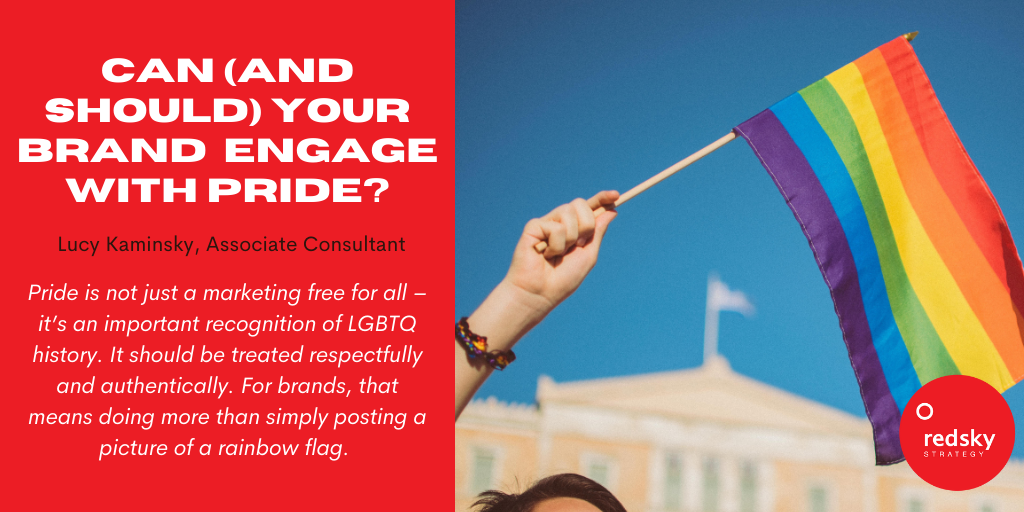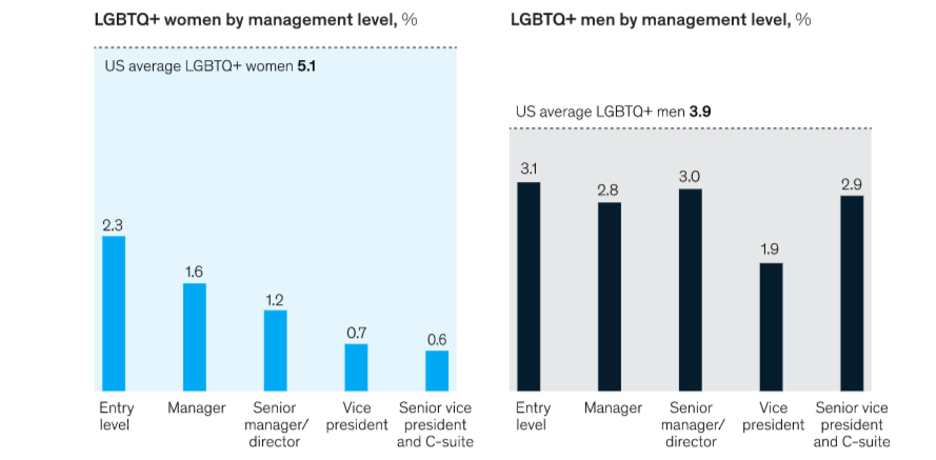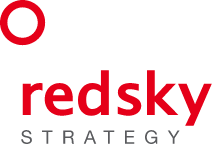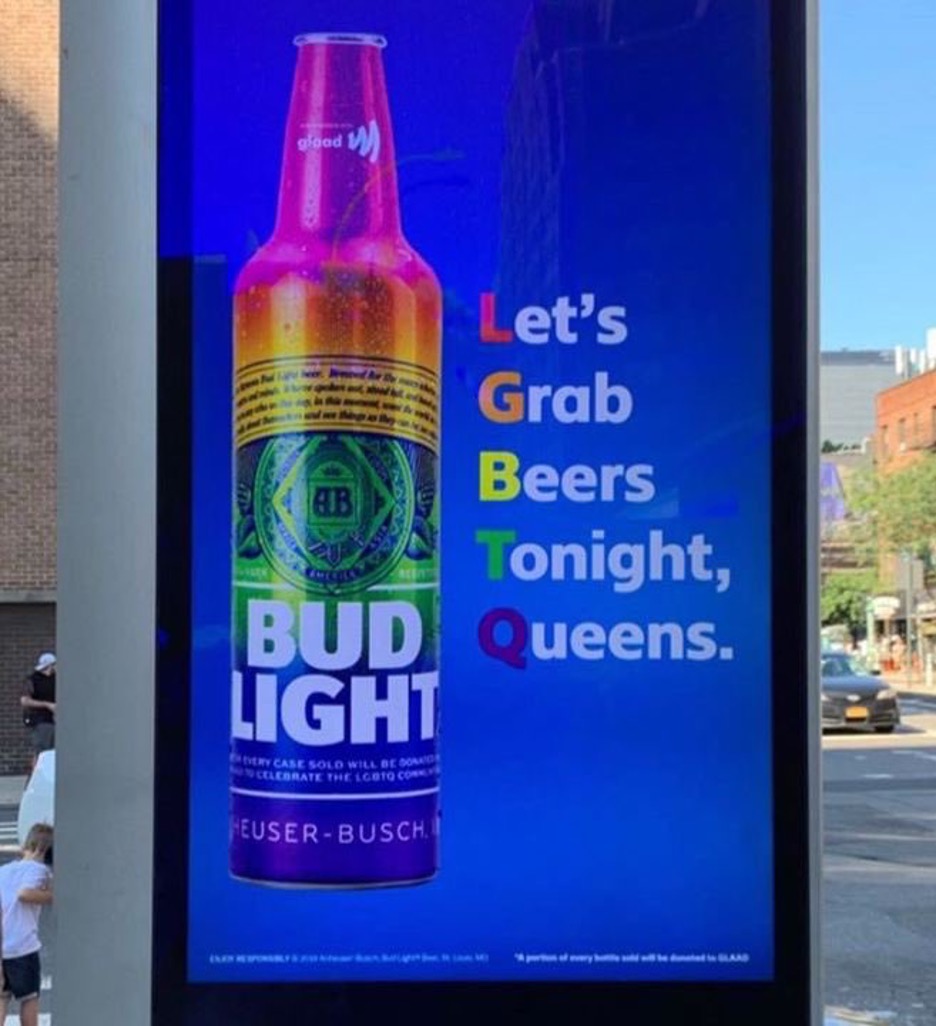News
Can (And Should) Your Brand Engage with Pride?

Image Credit: https://unsplash.com/photos/68y-oRxeY_Y
Currently, 7% of Americans identify as LGBTQ (lesbian, gay, bisexual, transgender, or queer), up from 5.6% in 2020. Among younger generations, the percentage of Americans indentifying as LGBTQ is considerably higher – around 11% of Millennials and 21% of Gen Z. A 2019 GLAAD and Harris Poll found that the majority of non-LGBTQ Americans (80%) support equal rights for the LGBTQ+ community.
At this point, marketers (ourselves included) have talked to death about how much Gen Z values authenticity, but this is even more true when it comes to LGBTQ+ issues. With Millennial spending around $65 billion and Gen Z nearly $100 billion, alienating members of these demographics can be a costly endeavor for brands.
Nothing To Be Proud Of
Companies such as AT&T, Walgreens, and Comcast NBCUniversal have donated tens of thousands of dollars to politicians who support the Florida legislation known as the “Don’t Say Gay” bill while also publicly offering support for the LGBTQ+ community.
While that’s an extreme example of what many consumers will see as ingenuity, it’s important for brands to consider the intentions behind and who benefits from any Pride campaigns this June. A free rainbow flag sticker with purchase in the month of June might seem like an easy PR win and an opportunity to show support for the LGBTQ+ community. But some consumers feel that brands have maxed out on doing the minimum for Pride while simultaneously reaping the benefits.
Take Bud Light’s (whose parent company Anheuser-Busch is also on the list of donors to politicians supporting the Don’t Say Gay Bill), poorly planned 2019 Pride Campaign. The beer company used the LGBTQ acronym to spell out “Let’s Grab Beers Tonight, Queens” – perhaps the worst beverage PR faux pas since Kendall Jenner’s Pepsi Ad):
Engaging With Pride Month: Do’s and Don’ts
In an effort to join the Pride party, some missteps can cause brands to ruin it. Brands need to ask themselves why they are engaging with Pride instead of simply feeling they need to. It’s better to genuinely opt to not engage than to do something that will be seen as performative.
There are a handful of actions brands can take to authentically participate and support the LGBTQ+ community during (and beyond!) Pride month, such as:
- Uplifting queer voices
- Donating thoughtfully
- Demonstrating transparency and honesty in their LGBTQ+ initiatives
There is also a need for LGBTQ+ support in the workplace. According to McKinsey & Company, 3 in 20 LGBTQ+ women and six in 20 LGBTQ+ men believe that their sexual orientation will hinder their career advancement. Compared to heterosexual women, LGBTQ women are more likely to report that their gender contributed to missing out on a promotion or raise. LGBTQ+ women, in particular, are underrepresented at every stage of the management pipeline.

For brands to authentically show support for the LGBTQ community, it’s important to start within by:
- Having LGBTQ people in executive roles
- Involving LGBTQ-identified people in designing and approving Pride campaigns
- Fairly compensating queer people
- Committing to diverse hiring
- Having gender-neutral restrooms
- Being more thoughtful in how gender is talked about
- Normalizing sharing pronouns along with names (ex. listing them along with your email signature)
To take it a step further, brands can also acknowledge intersectionality and how different queer identities (Black and Brown, disabled, immigrant) impact one’s experience. The more authentically inclusive the initiatives, the better.
On the other hand, it’s critical for brands to recognize the difference between uplifting queer voices and making money off queer voices. Rainbow washing (slapping a rainbow flag or light display a corporate HQ) is a lazy, tired, and ultimately performative show of “support”.
The same is true for limiting the show of support for the LGBTQ+ community to Pride month. It should be 365 days a year. As GLAAD CCO Rich Ferraro pointed out to CNN, “If a brand doesn’t have a 365-day-a-year plan for LGBTQ inclusion, they really need to prioritize that over prioritizing a one-off Pride campaign.”
Investing in brand loyalty for Gen-Z and Millennials is not only thoughtful – it’s a strategy to differentiate your brand and draw in customers. A little can go a long way: for a big corporation, donating a small percentage of a seasonal, limited-run product could result in years of brand loyalty and happy customers.
However, it’s necessary for companies to understand that Pride is not just a marketing free for all – it’s an important recognition of LGBTQ history and should be treated respectfully.
Things that push the status quo are not only going to make more of a difference, but when done right, they will garner brands far more applause than a rainbow filter. The payoff will be huge.
When it comes to supporting and championing social causes, such as Pride Month, it’s important for brands to demonstrate authenticity. This means going beyond simply participating because it feels like everyone’s doing and it’s something they should do. The main focus should be on understanding the purpose of Pride and participating in a way that helps further the progression of LGBTQ+ related causes.
Interested in working with RedSky Strategy? Reach out today to learn how we can help you leverage Innovation to dive deeper into trends to illustrate the nuances and learn how thoughtfully products can be brought to marketing campaigns.

